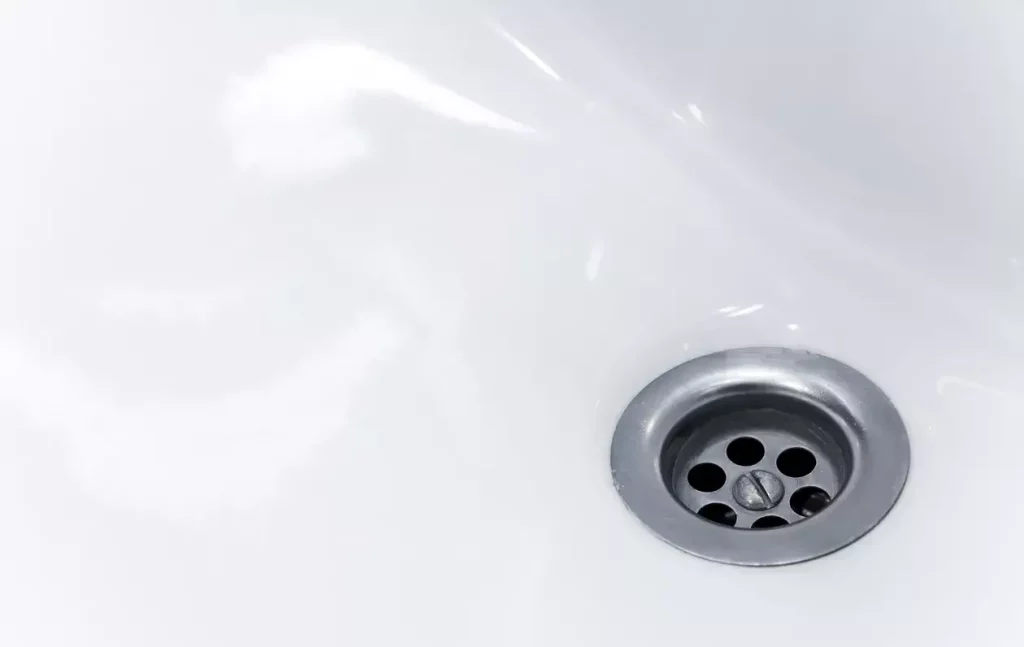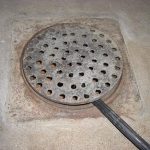Taking a relaxing bath after a long day is a great way to unwind, but it can quickly become frustrating if your trip-lever won’t work and you can’t drain the water properly. Issues with your bathtub draining or holding onto water often result from a faulty trip lever. If the trip lever gets stuck or has damage, this could prevent it from opening all the way, and the water won’t drain properly from your bathtub.
In this article, we’ll take a look at how you can fix a trip-lever bathtub drain won’t stay open. Whether it be identifying the problem or fixing it, we’ll provide you with the information you need to get your bathtub working properly again. So, let’s get started and learn how to fix your trip lever!
What Exactly Does a Trip Lever Do?
You may have noticed a toggle switch in your bathtub that controls the drain stopper. This switch is connected to a trip lever located behind the tub wall, usually under the faucet. The trip lever is connected to a metal link system that controls a rod, which in turn controls the drain stopper.
When you pull up the rod behind the faucet by operating the toggle switch, the drain stopper goes down, and when you push it down, the drain stopper goes up. This mechanism is similar to the design found in many bathroom sinks.
The trip lever is usually hidden behind a metal plate, which makes it difficult to see. You may need to remove the plate to access the lever. However, you can rely on how water behaves in the tub to detect any issues with the trip lever. For instance, if the toggle switch feels loose or won’t go up or down completely, there may be an issue with the trip lever.
In summary, the trip lever controls the drain stopper in your bathtub, and it is operated via a toggle switch located on the tub wall.
Trip Levers Can Operate Two Types of Drain Systems
Lift-Bucket Drain
When you operate a lift-bucket system, the switch you see in your bathtub connects to a vertical rod that is inside the overflow pipe, which is located behind the front wall of the tub. The vertical rod has a plunger at the bottom, usually a weight, which seals the drain at the bottom of the overflow tube. There is no pop-up stopper in a lift-bucket system.
Pop-Up Drain
Pop-up drains use a horizontal rocker arm that is controlled by the trip lever. The arm works a pop-up plug that fits into the drain opening. The plunger in this system connects to the horizontal rocker arm. Typically, the plunger is a spring that pushes down on the arm to open the stopper. When you move the trip lever to a closed position, gravity drops the stopper down and seals the drain.
Both lift-bucket and pop-up drain systems can be operated with a trip lever. However, the mechanisms of these systems are different. While lift-bucket systems have a plunger that seals the drain, pop-up systems use a rocker arm and a spring to control the stopper.
What Could Cause a Faulty Trip Lever?
If you have a faulty trip lever, there are several potential causes to consider. One common issue is when the plunger in a lift-bucket system gets caught in the overflow tube. This can prevent the plunger from moving freely, resulting in incorrect movement up and down.
Another possibility is an improperly adjusted vertical rod. If the vertical rod is not in the correct position, the plunger may not be able to drop far enough to seal the drain opening effectively.
In pop-up stoppers, the horizontal connecting rod may shorten or bend with use. This can lead to improper control of the stopper, causing it to stay closed most of the time and not open enough to drain the tub.
It’s important to inspect the mechanism, horizontal rocker arm, gravity, toggle switch, metal link system, pivot arm, and hold water to determine the cause of the faulty trip lever.
Troubleshooting a Faulty Trip Lever
If you’re having trouble with your tub drain, it could be due to a stuck or faulty trip lever. The switch might be too loose or stuck in place, making it difficult to operate. To troubleshoot, start by removing the cover plate and examining the metal link system to ensure everything is connected correctly.
If the mechanism is dirty, try cleaning it with a lime and calcium buildup and rust remover like CLR. This might fix the issue. However, if there is damage to the link system, it’s best to replace it. Alternatively, you could switch out the trip lever for another type of drain stopper.
Common causes of a stuck trip lever include corrosion, hair buildup, and soap scum. If you suspect any of these issues, clean the mechanism thoroughly and inspect for damage. With these basic troubleshooting steps, you can fix a faulty trip lever and get your tub draining properly again.
How to Fix a Stuck Trip Lever
Tools You Need for the Job:
To fix a stuck trip lever, you will need the following tools:
- Screwdriver
- Small scrub brush
- CLR or similar cleaner
- Adjustable wrench
Step 1: Remove the Cover Plate and Stopper or Plunger
To begin, use a screwdriver to remove the cover plate of the overflow. Keep the screws and cover plate in a safe place.
If you have a lift-bucket system, remove the vertical connecting rod and the plunger through the opening. If it’s a pop-up stopper, remove the horizontal arm and the spring. If the stopper fits between the spring’s coils, you’ll also need to extract the stopper.
Step 2: Clean the Plunger or Spring
Depending on the type of drain system you have, you’ll need to clean the plunger or spring. Use a small scrub brush to clean the device carefully. You can also clean the entire metal link system, as mentioned above, using CLR.
Step 3: Make Necessary Adjustments
If you have a lift-bucket system, you may need to lengthen the vertical connecting rod if necessary. You can do this by adjusting the linkage to let the plunger drop lower into the overflow tube. If your tub is not draining, you may need to tweak it so the plunger comes up enough.
With a pop-up stopper, you may also need to make some adjustments to the connecting rod. It might take a little trial and error to get it just right.
Step 4: Reassemble the Stopper
Reinsert the applicable items back through the overflow opening and connect as necessary. Then use the screwdriver to put the cover plate back into place. Turn on the water and test out the stopper a few times to ensure it’s working properly.
Do You Need to Hire a Plumber?
If this didn’t solve your issue, or there’s lots of rust or corrosion, it’s best to replace the entire assembly. You can call a professional to handle the job or attempt it yourself if you’re confident in your plumbing skills.
How to Replace the Bathtub Trip Lever Stopper
Tools You Need for the Job:
To replace your bathtub trip lever stopper, you will need the following tools:
-
Screwdriver
-
Gloves and goggles
-
Hacksaw
-
Hammer
-
Chisel
-
New stopper and stopper body
-
Rubber gasket
-
Plumber’s putty
Step 1: Remove the Cover Plate and Linkage
To begin, use a screwdriver to remove the cover plate and set the screws to the side. Next, pull out the linkage from the inside of the tub and set it to the side.
Step 2: Remove the Old Stopper and Stopper Body
Now it’s time to remove the old stopper and stopper body. The stopper body is the metal ring that surrounds the tub drain.
You can remove the stopper relatively easily by either pulling or twisting it out of the opening. Then, put on your gloves and goggles before removing the stopper’s body. You’ll use the hacksaw to cut a small notch in the ring, then dislodge it with the hammer and chisel.
The gloves and goggles will protect you from any random shards that might pop up onto your face or hands. Toss out the old stopper and stopper body.
Step 3: Install the New Stopper and Stopper Body
Once you’ve removed all of the old system, you can install the new one. It’s best to replace the rubber gasket at this time. Use plumber’s putty on the stopper body/flange underside that will come in contact with the tub.
Screw the stopper into the drain, fitting it tightly into the hole.
Step 4: Replace the Linkage and Cover Plate
Finally, replace the rest of the linkage and mechanism, and then replace the cover plate. Now, you’re ready to take a nice, warm bath.
Keep in mind that if you determine you need to replace a new trip mechanism, you may want to contact a pro. This repair contains many more steps and can be a bit more challenging.
Related Questions
Is Your Bathtub Not Retaining Water?
If your bathtub is not holding enough water, there is a quick and easy solution that doesn’t require any major DIY fixes or tools. You can purchase a silicone suction tub stopper for about $4 on Amazon or at a home store. This is a temporary solution until you can get around to a more permanent DIY fix or call a plumber.
What Are Other Types of Bathtub Drain Stoppers?
Aside from trip-levers, there are several other types of bathtub drain stoppers available. These include lift-and-turn, push-and-pull, pop-up, toe-touch, and flip-it stoppers. Most of these are simple to operate and clean, with the exception of trip-levers and pop-ups. If you need to replace your trip-lever, consider swapping to an easier stopper option.
More Related Guides
If you’re having other issues with your bathtub drain, check out these related guides:
- Bathtub Drain Stopper Stuck in Closed Position?
- Bathtub Faucet Still Leaks After Replacing Stems?
- Can a Bathtub Drain Freeze?




